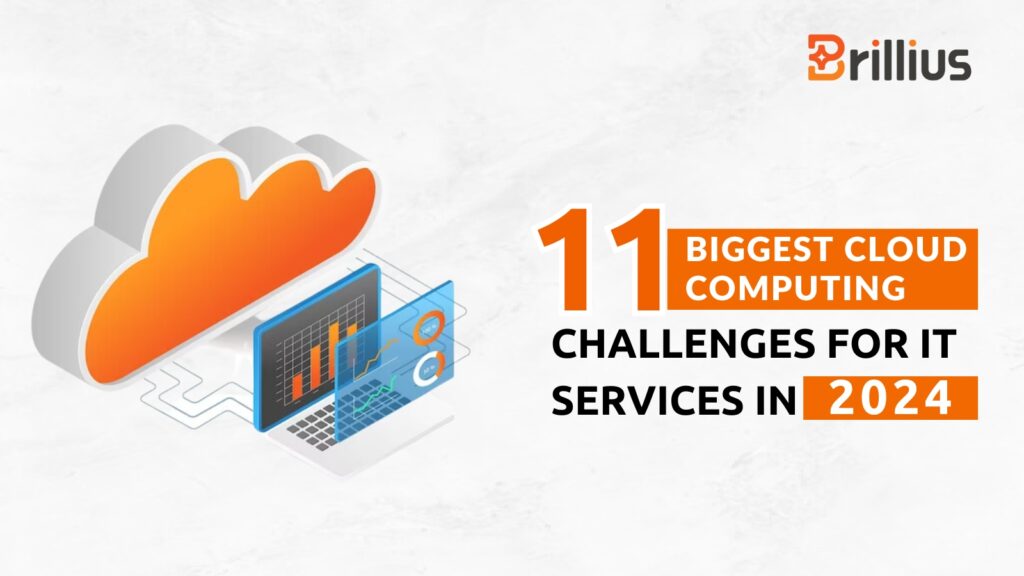Welcome to our blog, where we delve into the ever-evolving landscape of cloud computing. In this edition, we explore the challenges that IT services are facing as they navigate the complex skies of cloud technology in 2024.
In recent years, cloud computing has transformed the way businesses operate, offering unparalleled flexibility, scalability, and efficiency. However, with great power comes great responsibility, and as cloud technology continues to evolve, so too do the challenges facing IT services. From security concerns to compliance issues, here are the 11 biggest challenges that IT services must overcome in 2024.

1. Security Threats: With the increasing complexity of cloud environments, security remains a top concern for IT services. From data breaches to ransomware attacks, protecting sensitive information in the cloud requires robust security measures and constant vigilance.
2. Compliance and Regulatory Issues: As regulations governing data privacy and security continue to evolve, IT services must ensure compliance with a myriad of laws and standards, such as GDPR, CCPA, and HIPAA, among others.
3. Data Privacy: Maintaining the privacy of user data is paramount in the cloud era. IT services must implement robust data encryption and access controls to safeguard sensitive information from unauthorized access or disclosure.
4. Cloud Governance: Managing multiple cloud environments can be challenging, leading to issues such as cloud sprawl, resource misallocation, and lack of visibility. Implementing effective cloud governance frameworks is essential for optimizing resource utilization and controlling costs.
5. Vendor Lock-In: Dependency on a single cloud provider can limit flexibility and hinder innovation. IT services must adopt a multi-cloud strategy to avoid vendor lock-in and leverage the best features of multiple cloud platforms.
6. Integration Complexity: Integrating disparate cloud services and on-premises systems can be complex and time-consuming. IT services must invest in robust integration tools and platforms to streamline workflows and enhance interoperability.
7. Performance Optimization: Ensuring optimal performance of cloud applications and services is essential for delivering a seamless user experience. IT services must leverage performance monitoring and optimization tools to identify and address bottlenecks in real-time.
8. Cost Management: Cloud spending can quickly spiral out of control without proper oversight and governance. IT services must implement cost management strategies such as rightsizing, resource tagging, and budget allocation to optimize cloud spending and minimize waste.
9. Skills Gap: The rapid pace of innovation in cloud technology has created a skills gap, with many IT professionals struggling to keep pace with the latest developments. IT services must invest in training and development programs to upskill their workforce and stay ahead of the curve.
10. Legacy Systems Integration: Migrating legacy systems to the cloud can pose significant challenges, including compatibility issues and data migration complexities. IT services must develop comprehensive migration strategies and leverage hybrid cloud solutions to seamlessly integrate legacy systems with modern cloud environments.
11. Disaster Recovery and Business Continuity: Ensuring business continuity in the event of a disaster or outage is critical for maintaining uptime and minimizing disruption. IT services must implement robust disaster recovery plans and leverage cloud-based backup and replication solutions to safeguard critical data and applications.
In conclusion, while the benefits of cloud computing are undeniable, navigating the challenges of the cloud era requires careful planning, robust infrastructure, and a commitment to continuous improvement. By addressing these 11 key challenges head-on, IT services can unlock the full potential of cloud technology and drive innovation in the digital age.
Stay tuned for more insights and updates on the evolving world of cloud computing!
Thank you for reading our blog. We hope you found it informative and valuable.